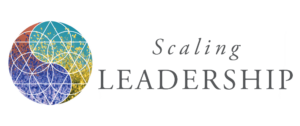What are you doing or not doing that limits your positive influence on the people around you?
How can you move a team, an organization or yourself more effectively towards the future you want?
Scaling Leadership by Robert Anderson and William Adams is the newest book I am recommending to many of my clients or former clients who are continuously developing themselves and their teams. Here’s why:
1) It provides a compelling business case for continuing leadership development for all levels of leaders. Do you want to be inspired to make this most rewarding investment in yourself? The willingness to invest substantially (with both time and resources) in your own development is the first marker of great leadership potential.
2) Scaling Leadership explains how senior leaders sabotage their own efforts –and how they succeed, with precise descriptions sourced from real feedback from the workplace. It is helpful to learn from real life examples and to see the developmental patterns that affect all of us.
It reveals the fundamental shift that most leaders need to make: from a Reactive to a Creative mindset. To lead in the most effective ways, leaders must be operating consistently at a higher level of consciousness than they did in the past. They must be aware of what they are doing, rather than following old established self-protective behaviour patterns. And they must be choosing their behaviours with more awareness of the impact those choices have on others. What does that mean in your case?
This short video is one I share frequently to help people see how practical and immediate this Reactive to Creative shift can be.
3) This book includes a self-assessment process that helps you identify your current level of leadership effectiveness.
4) It describes 3 types of leaders to help you see what traits and behaviours are most important in your case.
5) It also includes a self-development guide to help you respond to what you discover in your self-assessment. For those who are dedicated and self-sufficient, this guide can be a good foundation for ongoing practice.
6) I especially like the book’s emphasis on the practical fundamentals of the leadership development process. In particular:
a. How to get authentic, ongoing feedback on your leadership,
b. The breakthrough benefits of creating and using a learning community with fellow leaders in the workplace.
c. The crucial role of regular personal reflection to continuously build awareness.
The pace of change in the business world is demanding a new paradigm of leading, which is exactly what this book describes. The new ways of leading that we need, are often counter-cultural. They require personal courage and commitment. As leaders, we have the most to gain by stepping boldly into this change process.
The changes we need cannot come only from a book or a course. They can only arrive through a continuous process of insight, self-reflection and step-by-step implementation. This book is an excellent resource for this process.
If leadership development is important to you, let’s talk to see if there is a match between my leadership development coaching services and your needs.
